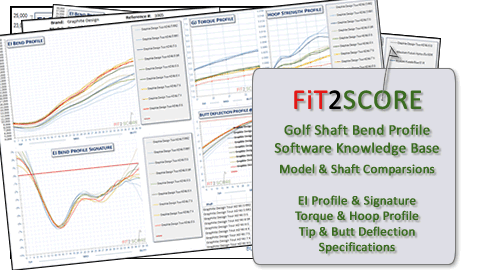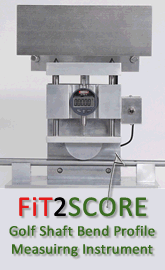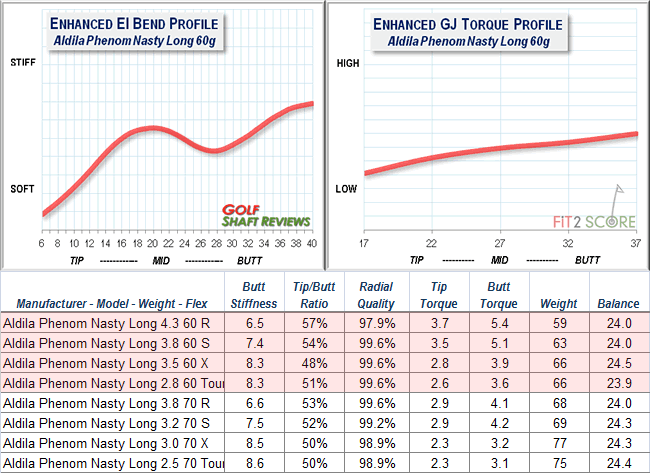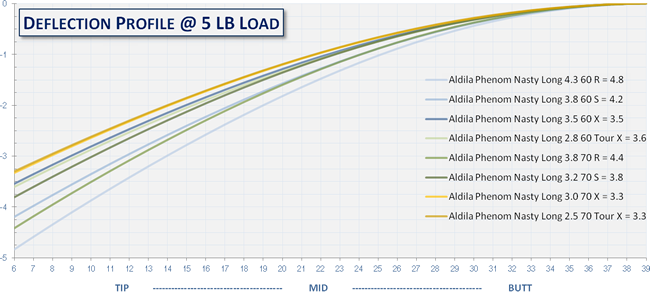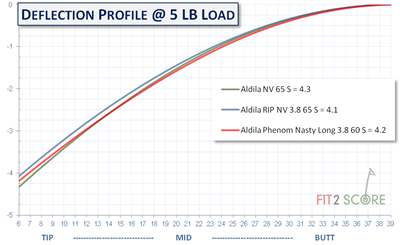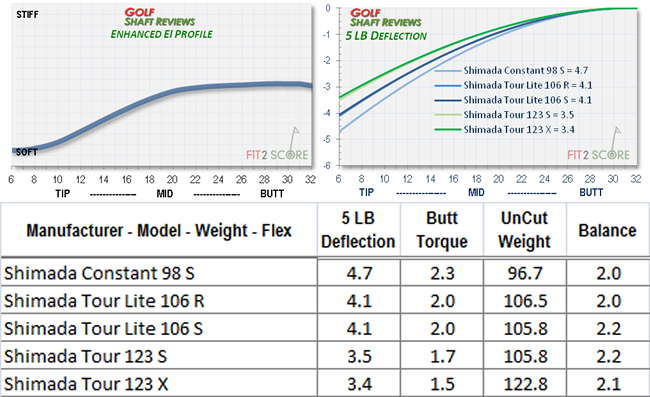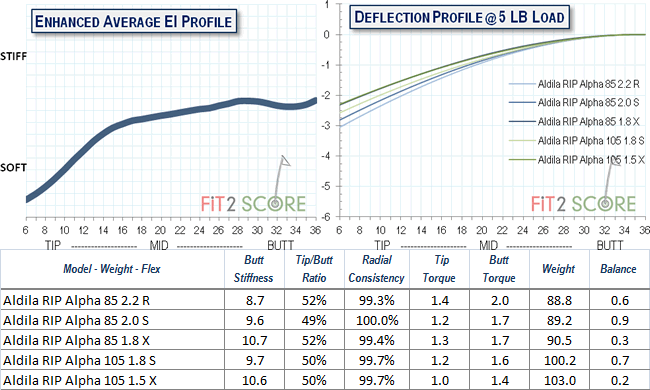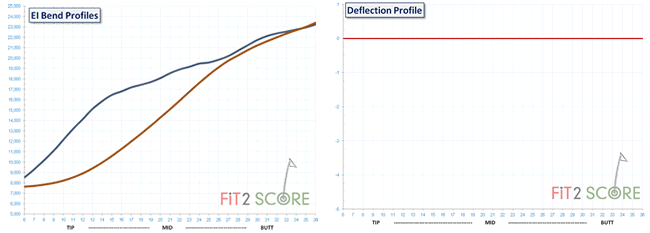Modeling Static Load Deflection
Understanding the differences in golf shafts has never been easy. Bending is the product of the elastic modulus E and the area moment of inertia I of the beam cross section at a point on the beam. The formula looks like this:

w is the bending of the beam, x is the location and k is the curvature. This is the fundamental science used by all golf shaft designers of significance. It makes simple sense to use the same system to understand their designs.
Working with my friend and technical mentor, Dave Tutelman, I added deflection modeling to my shaft knowledge base. Deflection can be calculated from EI. Knowing the EI of 36 sections of a driver shaft, a composite bend can be modeled with weight as a variable. This illustrations shows the EI profile of two shafts on the left. On the right the shafts are loaded with different weights to model their deflection when loaded.

I picked these two shafts to illustrate the value of knowing the EI profile of golf shafts. These two shafts are both rated by their respective manufacturers as S flex. The EI profile shows the butt and tip stiffness to be about the same. And yet, they show very different bend patterns when loaded as shown on the right.

The loading illustration is what you would see if you used a deflection board. I borrowed this image of a deflection board from GolfWorks.This is a classic tool used by club makers to understand shaft bending properties and to rate stiffness.
Frequency instruments have replaced this instrument in most club makers shops. Frequency gauges give the club maker a number which many software systems translate into stiffness. What is not seen on frequency instruments is the bend profile seen on a deflection board. The shortcoming of deflection boards is that they do not quantify the bend profile, leaving the club maker to compare bend properties with tracings.
Using EI values along the shaft, the deflection profile can be calculated and quantified as shown. This lets shaft engineers translate the matrix of material properties used in the shaft, wall thickness, wall diameter and taper rate into computer simulated bend properties of a golf shaft. All major shaft design companies have created software to model their ideas before they develop prototype shafts.
My EI instrument brings the shafts we play with back into modeling. The club fitter, equipped with EI measurements, understands the bend properties of the shafts he fit with. That understanding is why it was necessary to invent my own instrument and system for measuring golf shafts. The fitters that are authors on this site understand the golf shafts they fit with from this perspective.
The load applied during a golf swing is transformed into shaft deflection. That deflection is what you feel as stiffness when you swing. Feel feedback helps you time your swing. The EI bend profile determines not only the amount of deflection but also the shape of the deflection. And that shape influences how your swing/shaft interaction presents the club head to the ball at impact.
 The Highlands Performance Golf Center, Carrollton Texas
The Highlands Performance Golf Center, Carrollton Texas ![]() ACCRA is now owned by True Sports. True Sports was formerly known at True Temper. For the past several years, the owners of ACCRA through their distribution company, PGMC have been the distributors of True Temper shafts to golf fitters.
ACCRA is now owned by True Sports. True Sports was formerly known at True Temper. For the past several years, the owners of ACCRA through their distribution company, PGMC have been the distributors of True Temper shafts to golf fitters.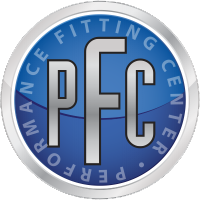 PGMC runs the Performance Fitting Center certification program.for True Temper. The owners of ACCRA have a long history in golf shaft production and golf club fitting. The company is dedicated to professional golf club fitters. Their products are developed from feedback from the top golf club fitters in the world.
PGMC runs the Performance Fitting Center certification program.for True Temper. The owners of ACCRA have a long history in golf shaft production and golf club fitting. The company is dedicated to professional golf club fitters. Their products are developed from feedback from the top golf club fitters in the world.

